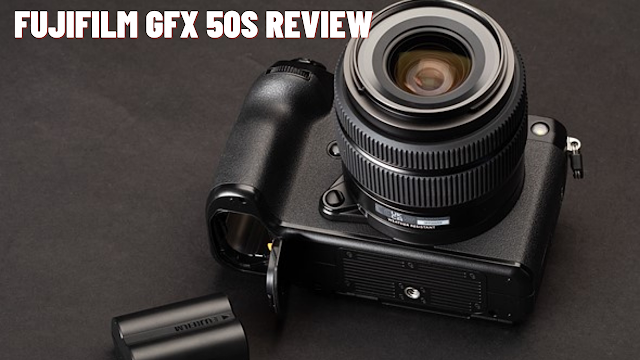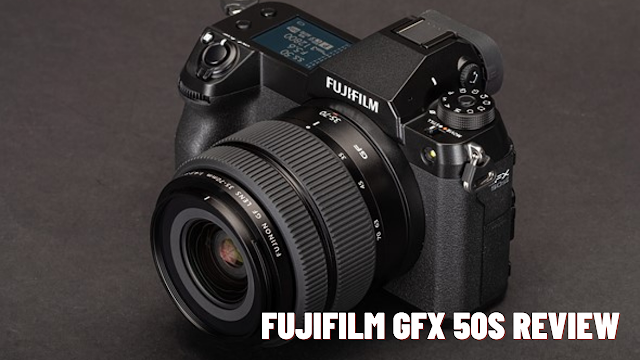Fujifilm's GFX medium arrangement cameras have been around for just about five years now, and they've been drawing logically nearer to the standard. The first Fujifilm GFX 50S, which was reported in 2016, was one of only a handful of exceptional 'moderate' medium arrangement cameras accessible at that point, however from that point forward Fujifilm has even made 102MP choices that are somewhat reasonable contrasted with their rivals.
Notwithstanding, Fujifilm's 102MP medium configuration cameras are still lovely costly, and that is the place where the new Fujifilm GFX50S II comes in. It offers a large portion of the sensor goal at 51.4MP, brings a couple of critical enhancements over its archetype, and all at a lower dispatch cost than the first GFX 50S. This makes the GFX50S II a convincing option in contrast to high-goal full-designers, in case you're not a speed horrible.
In any case, on the off chance that you can get a 65MP Sony A7R IV at a lower cost than the GFX50S II, wouldn't that be a superior alternative? Of course, however once in a while (sensor) size matters. The medium arrangement sensor in the GFX50S II is about 1.7x greater than a 35mm full-outline chip. Also, that implies better light-social event capacities, and hence an unrivaled low-light execution and fantastic powerful reach that couple of full-designers can coordinate.
You'll have to factor in the expense of focal points, however, and the GF focal points don't actually come modest. All things considered, the single-focal point pack for the GFX50S II is valued well, and it very well may be feasible to eat up another GF focal point or two during a deal.
Fujifilm GFX50S II plan
Actually, the first GFX 50S and the Mark II are altogether different. Fujifilm has utilized the GFX 100S body for the new GFX50S II, giving it a more DSLR-style control design. This would make it simple for anybody moving away from an alternate framework to adjust to the GFX50S II rapidly.
Dissimilar to the first GFX 50S, which has somewhat squeezed dials on the top plate, there's simply the customary mode dial and the electronic viewfinder (EVF) on the Mark II, with a 1.8-inch LCD show to one side of the viewfinder. The showcase can be set to show virtual dials, a histogram or a full arrangement of shooting boundaries. There's even a little light catch to enlighten the showcase.
Discussing the EVF: the more established GFX 50S had a removable eye-level viewfinder that could be supplanted with a discretionary shifting EVF. Notwithstanding, the EVF on the Mark II is fixed, as in the GFX 100S, and has a similar 3.69 million-speck goal as in the past.
Supplementing the EVF on the back is the 3.2-inch, three-way shifting touchscreen, equivalent to the one utilized in the GFX 50S and GFX 100S. The catch format on the back in the Mark II is significantly more natural than previously – it's precisely the same arrangement as its 102MP kin. Nonetheless, the Quick Menu button on the Mark II actually sits on the edge of the thumb rest (as in the GFX 100S) and may cause incidental presses in case you're not excessively cautious.
Like the GFX 100S body, the GFX50S II likewise sits easily in the hand, with a husky hold that disperses the weight well, in any event, when a powerful focal point has been joined. At 900g, it's no lightweight, and the camera can feel weighty after delayed handheld use, however it's a long ways from bigger bodies like the GFX 100.
Having acquired the body from the GFX 100S, the GFX50S II likewise has the very NP-W235 battery that is appraised for around 460 shots for every full charge. Double SD card openings, 3.5mm jacks for mic and earphones, a USB-C port for charging and moving records, a smaller than normal HDMI port and a PC sync port gather together the camera body.
Fujifilm GFX50S highlights
Fujifilm has chosen to stay with the very 51.4MP sensor that was utilized in the first GFX 50S, and that is not really something awful.
You're actually going to get faultless picture quality, with shallow profundity of field regardless of the central length. Notwithstanding, that additionally implies you're still just getting contrast-identify self-adjust, which is more slow than stage distinguish AF. All things considered, Fujifilm claims that moves up to its AF calculations have had an effect.
Regardless of getting the most recent X-Processor 4 motor, however, there's still no 4K video capacities on the Mark II. That is an impediment of the more established sensor, and you are as yet limited to the 3fps persistent shooting speed that we found in the more seasoned model, as well.
While the absence of 4K video and a small persistent shooting speed is somewhat baffling, Fujifilm has compensated for it by further developing the in-self-perception adjustment (IBIS). The 5-pivot IBIS framework is presently appraised for an incredible 6.5 stops of amendment for camera shake – that is a half stop improvement over the GFX 100S and the best IBIS rating of any GFX camera to date.
There's likewise a Pixel Shift Multi-shot capacity now accessible on the GFX50S II, an element that was absent on the first. This produces 200MP pictures by catching 16 RAW pictures as the sensor shifts by 0.5 of a pixel – the last composite picture isn't delivered in-camera however, and should be done in post utilizing Fujifilm's Pixel Shift Combiner programming.
To assist with visual innovativeness, each of the 19 of the current Film Simulations are ready, including the Nostalgic Neg that appeared in the GFX 100S.
Fujifilm GFX50S II execution
It's very hard to see problem with the outcomes delivered by a medium arrangement body. Truly, the self-adjust execution can feel slow when contrasted with a full-edge or APS-C mirrorless camera, yet the GFX50S II isn't a slouch all things considered.
We had the camera with us for about seven days preceding dispatch and had the option to play out some primer tests. Also, joined with the GF 23mm f/4 R LM WR focal point, the AF obtaining speed wasn't disillusioning in any way, even in low light conditions. The camera was rapidly ready to lock onto a moving ship and track it, maintaining the subject in center. We actually need to test the camera's face and eye identification abilities, and we'll refresh this survey with more subtleties soon.
The GFX50S II is as yet going to be the transmit of scene, representation and still life photographic artists. The degree of detail that can be accomplished with this 51MP sensor is amazing. And afterward there's the unbelievable unique reach. We stepped through a couple of underexposed examination shots and there was an enormous scope to play with. It was very simple to bring out subtleties in shadows and features without affecting the picture quality.
We actually need to put the camera through its ISO paces, however from our underlying tests, picture quality at base ISO is superb. We went up to ISO 1250 with not a trace of grain, but rather we'll refresh this audit with more outcomes when we've tried the camera's full abilities.
Early decision
It's truly extremely enticing to contrast the Fujifilm GFX50S II and a high-goal full-outline mirrorless camera, however it's nonsensical to anticipate that the performances should coordinate. Medium configuration sensors and 35mm chips are totally different monsters.
The GFX50S II, similar to its archetype, isn't worked for speed or video. It's most certainly worked to deliver some remarkable stills, nonetheless, with self-adjust execution above and beyond for any situation you'd utilize a medium arrangement camera for.
The choice to utilize the more DSLR-like body of the GFX 100S here is a decent one, permitting most photographic artists to do a switch effectively and easily. What's more, there's no moving away from the sticker price – on the off chance that you esteem the benefits the enormous sensor can offer, changing to a medium arrangement body is presently most certainly feasible.


